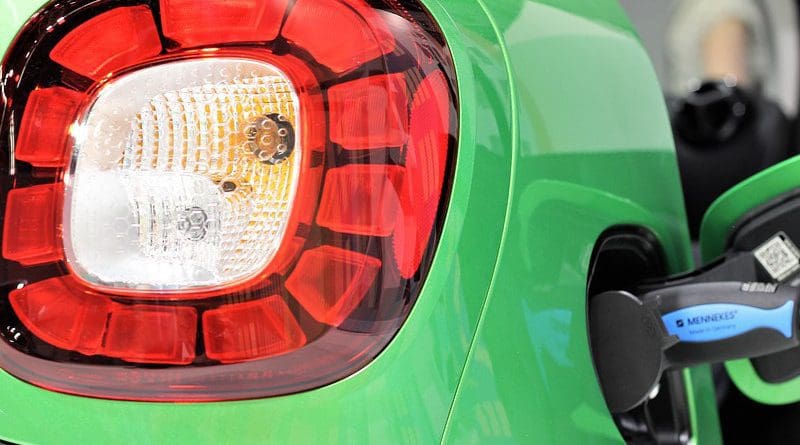Electric Car Delusions – OpEd
Fresh from attending COP26 in Glasgow, Prime Minister Scott Morrison was keen to impress the Australian public that he was willing to make good his word about the role technology would play in combating climate change. An important component of his limited strategy lies in the realm of electric cars, the very thing he warned Australians against in 2019. His then opposite number, Labor’s Bill Shorten, was accused by the prime minister during the election campaign of wishing to end the Australian weekend. “I’ll tell you what, it’s not going to tow your trailer. It’s not going to tow your boat,” he warned.
Things, however, had changed. COP26, pressure from other countries, and potential electoral pressure within traditional Coalition seats, had made the prime minister shift his position. In a joint press release from the Prime Minister and Energy Minister Angus Taylor, the government promised, as part of the Future Fuels Fund investment, $250 million on vehicle charging and hydrogen fuelling infrastructure; heavy and long-distance vehicle technologies; commercial fleets and household smart charging.
In terms of numbers, 400 businesses, 50,000 households will be affected, and 1000 public charging stations created. With an eye towards private investment, the hope is that there will be over $500 million “of combined private and public co-investment directed into the update of future fuels in Australia and the creation of more than 2,600 new jobs.”
When asked why he had essentially adopted, if only in lite version, a variant of the condemned Labor opposition policy from 2019, Morrison gave a ducking answer. “I don’t have a problem with electric vehicles, I have a problem with governments telling people what to do and what vehicles they should drive and where they should drive them, which is what [the opposition’s] plan was.”
On the commercial breakfast show “Sunrise”, the Prime Minister found himself being corrected by host Natalie Barr like an errant school child. “The Labor Party were not forcing people. It was not a mandate at the last election that they were introducing, it was a non-binding target of 50 percent [of new EVs by 2030].” Morrison, balletically evading the point, insisted that Labor “were going to put up the price of fuel.”
The new EV policy did little to move Electric Vehicle Council chief executive Behyad Jafari. “We’ve been waiting some two years for this policy that’s already about a decade overdue,” he told Radio 6PR Breakfast. The policy was “the first five pages of a book, rather than the whole thing.”
Australia’s hostility to EVs has not gone unnoticed. In 2020, the rise in battery-powered vehicles in the European and the UK came in at 10%. In Australia, it was a barely nudging 0.7%. In terms of efforts to decarbonise road transport, Australia has been ranked in the lower tiers of the Group of 20, lagging behind Turkey and Indonesia.
Such figures have done little to impress carmakers such as Volkswagen AG, who stated earlier this year that its ID.3 and ID.4 electric vehicles were unlikely to appear in Australia before 2023. “Hardly a day goes by when we don’t get an inquiry from someone who would dearly love to buy a Volkswagen electric vehicle,” stated the company’s Australian chief, Michael Bartsch in March, “and we have to tell them we don’t know when we can introduce them.”
The office of the Energy Minister, Angus Taylor, officiously dismissed such remarks at the time, suggesting that Australia would not “be lectured about vehicles emissions by a car manufacturer that has a track record of deceiving motorist and violating clean-air laws”.
The modest attempt to redress this state of affairs does not compare with incentives that are being promoted at the state level. The New South Wales government has promised to contribute more to the entire program in the state than the Commonwealth will across the entire country. NSW Treasurer Matt Kean may well be from the same party as the Prime Minister, but on environmental policy, their song sheets are markedly different.
A day after Morrison’s announcement of a future fuels fund to build charging stations across the country, Kean revealed that $105 million in additional funding to encourage EVs in his state would be provided. This would complement the June commitment by the NSW government valued at $490 million, which involves waiving stamp duty on EV purchases, $3,000 rebates for up to 25,000 vehicles under $68,750, deferring road user charge until 2027 and expenditure on charging infrastructure. “This is a revolution which is coming whether [Deputy Prime Minister and Nationals leader] Barnaby Joyce likes it or not,” promised the Treasurer.
On the ABC’s 7.30 program, Kean also had a few words regarding Morrison’s own EV initiative: “the funding they’ve put on the table doesn’t even match the funding that we’ve put here just for the state of NSW.”
The NSW policy did much to stir Bartsch. The state had “shown its federal colleagues and its counterpart in Victoria the way to bring about mass ownership of affordable electric vehicles.” Kean could not be faulted for his “targets for private ownership and fleet take-up of EVs”. But the NSW Treasurer has gone further, announcing that his government will be signing the COP26 Declaration on the transition to zero-emission vehicles by 2040, thereby setting a target Morrison has been loathe to commit to.
The reluctance on the part of the Commonwealth to do more in terms of subsidies, rewarding EV manufacturers, and establishing enforceable CO2 emission standards will continue to make car vendors seek other markets in the green transition. Australia may well escape the potential fate of being a “third world dumping ground” for polluting car technology, but at this point, it is in no danger of moving into the first world of battery-powered efficiency.

